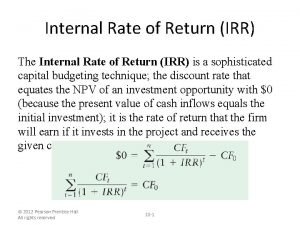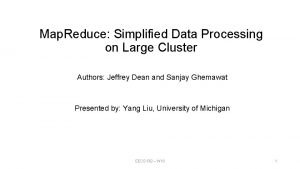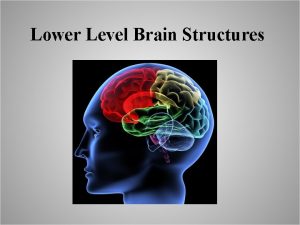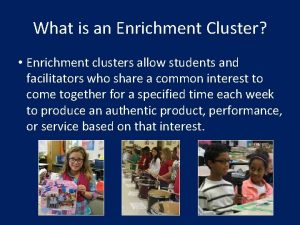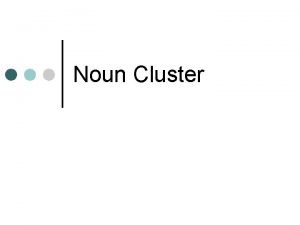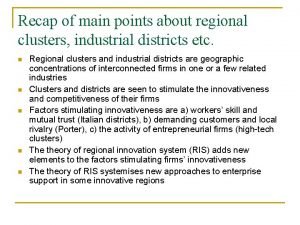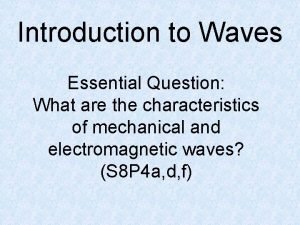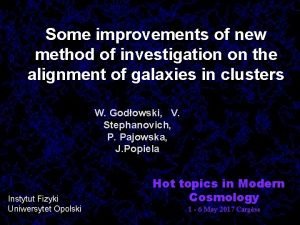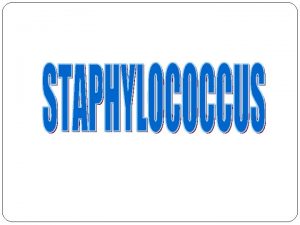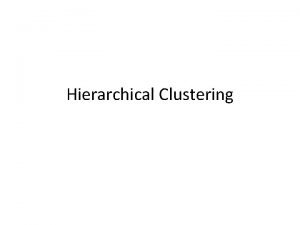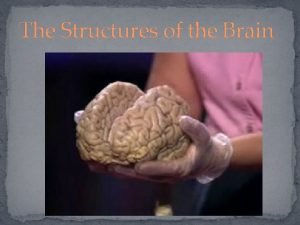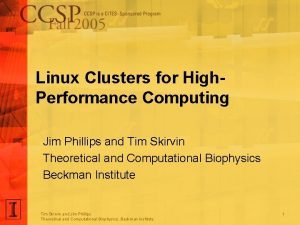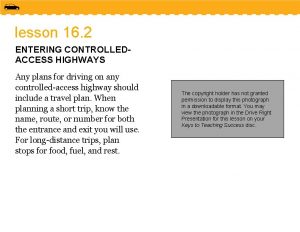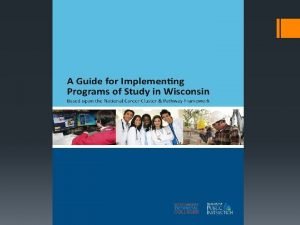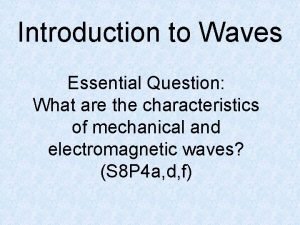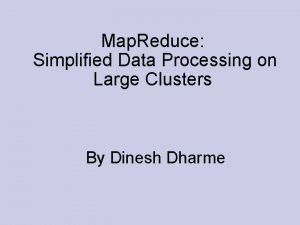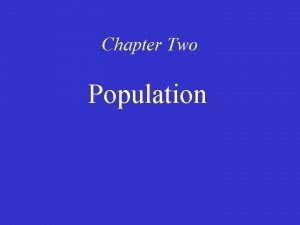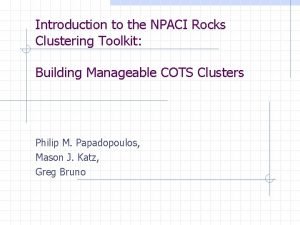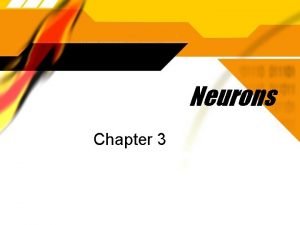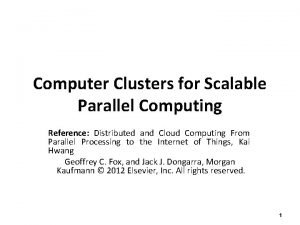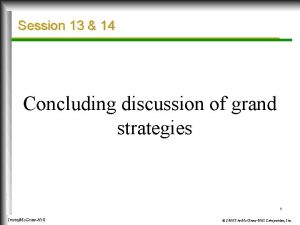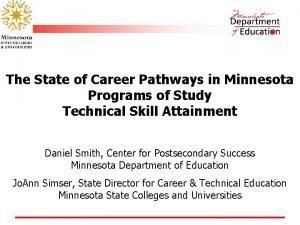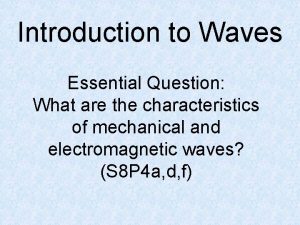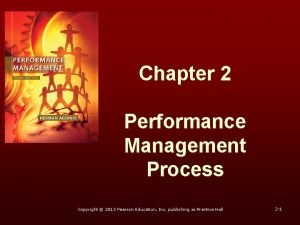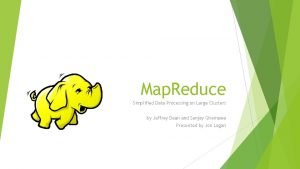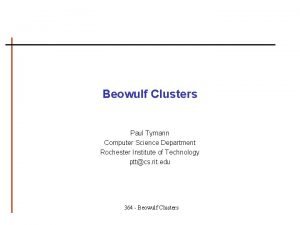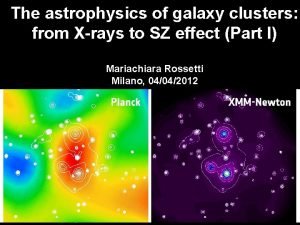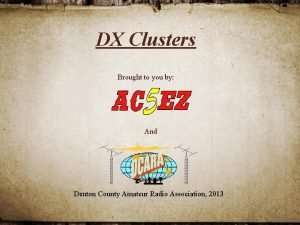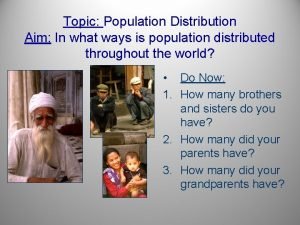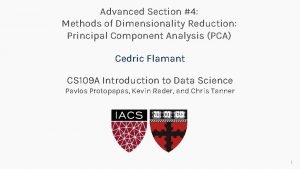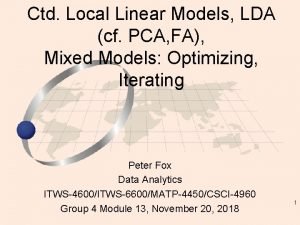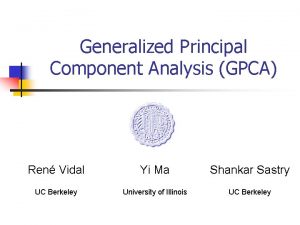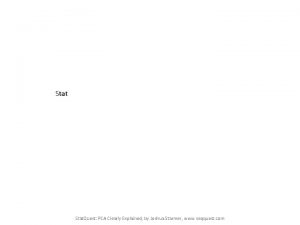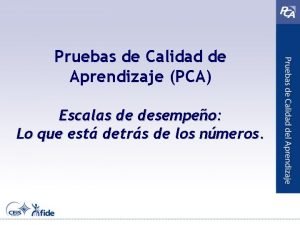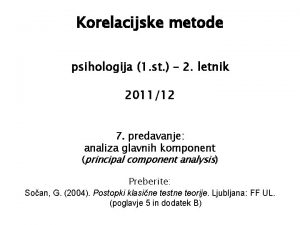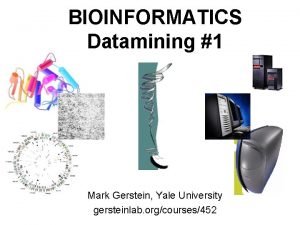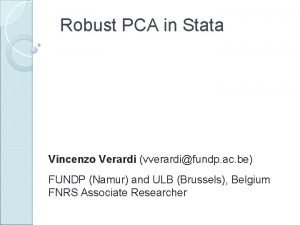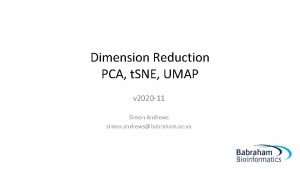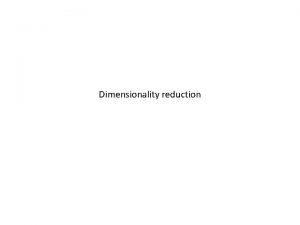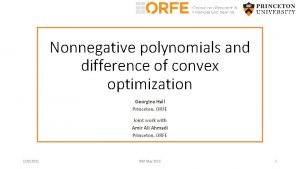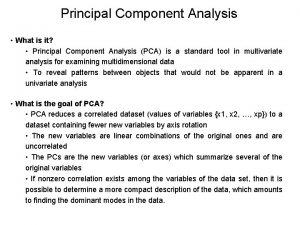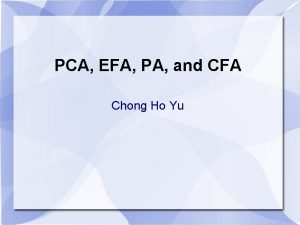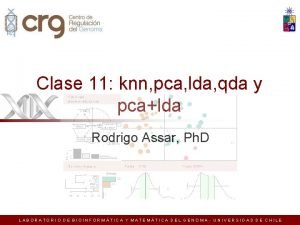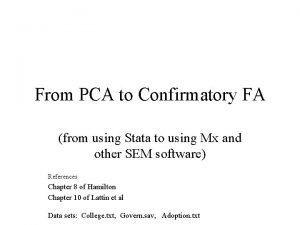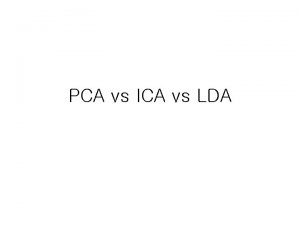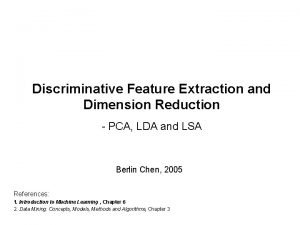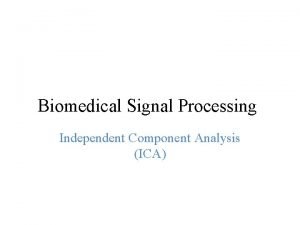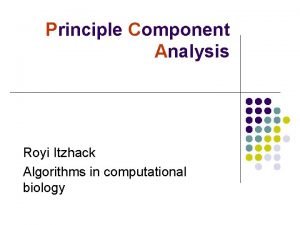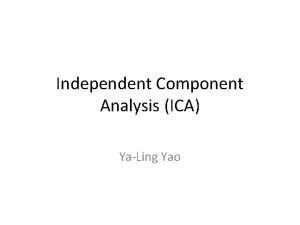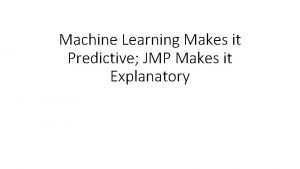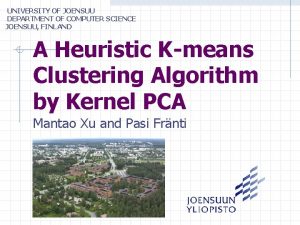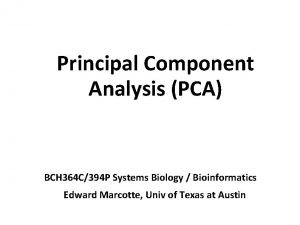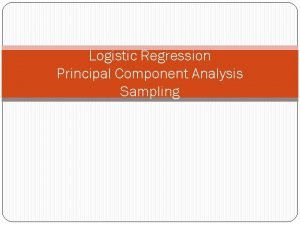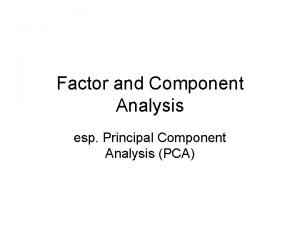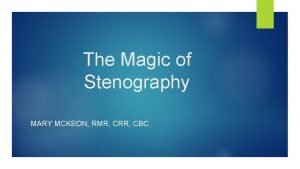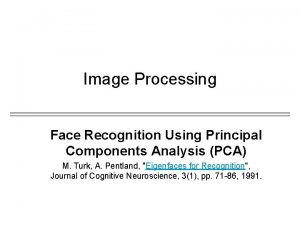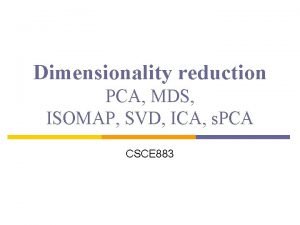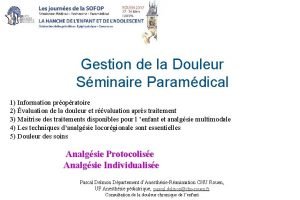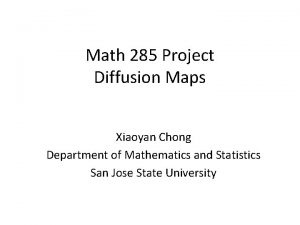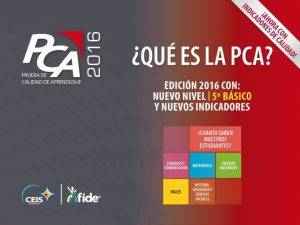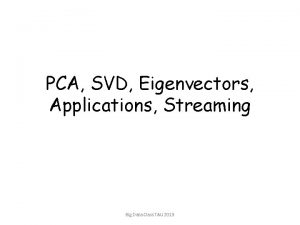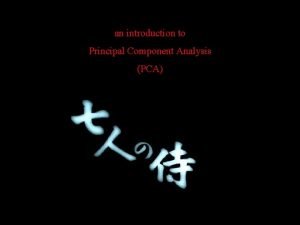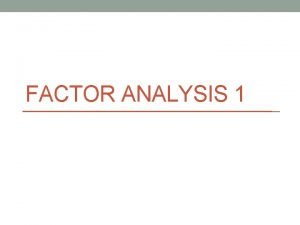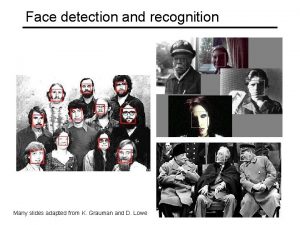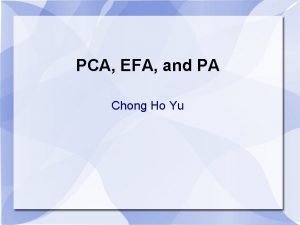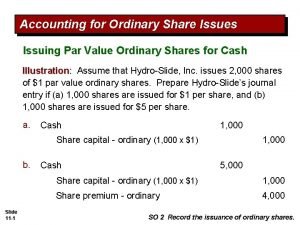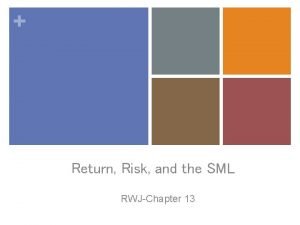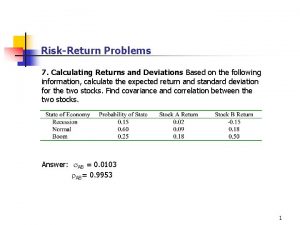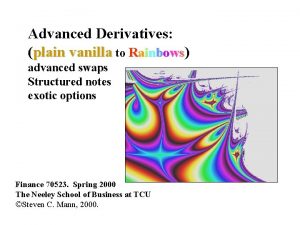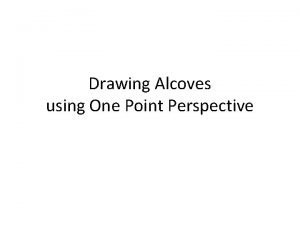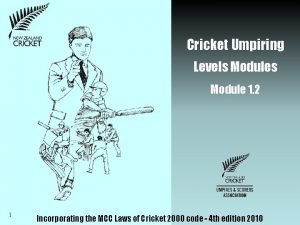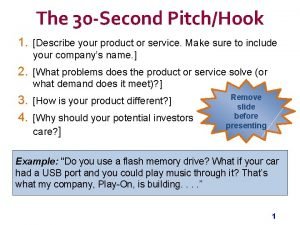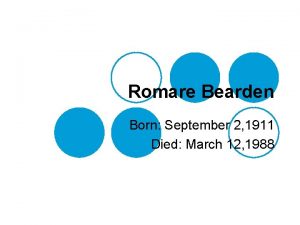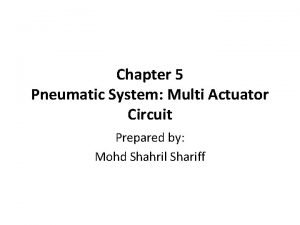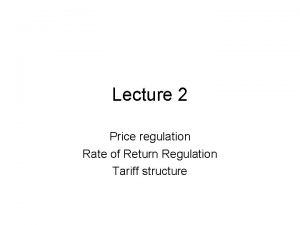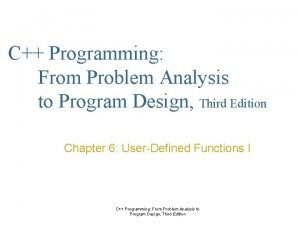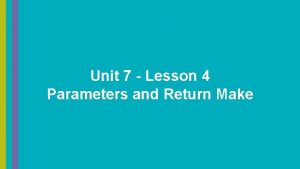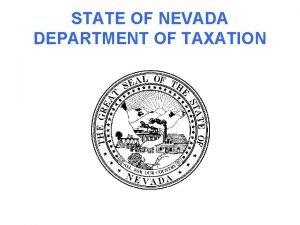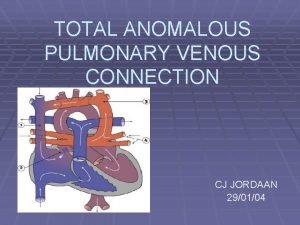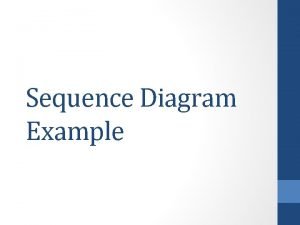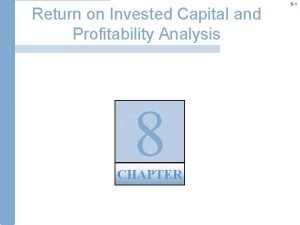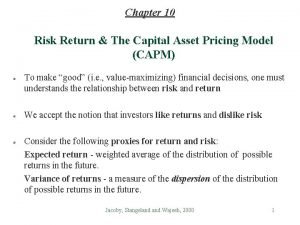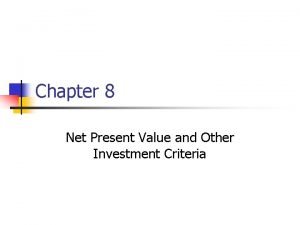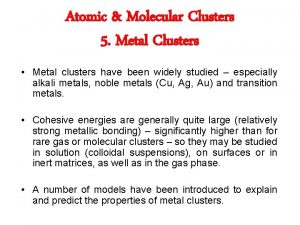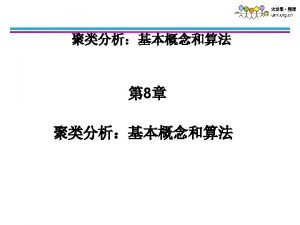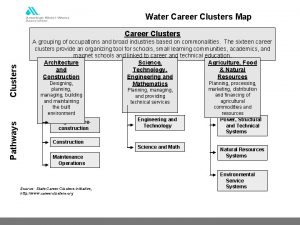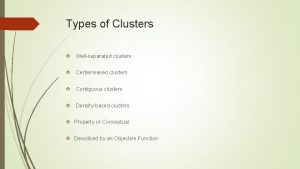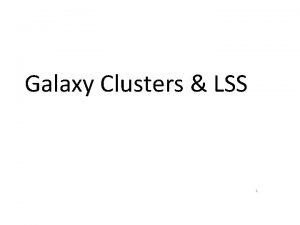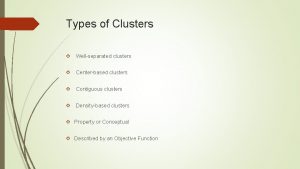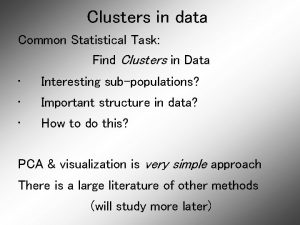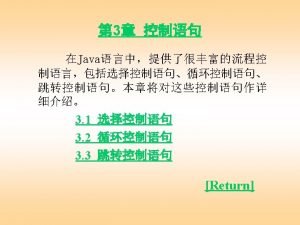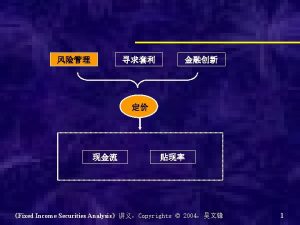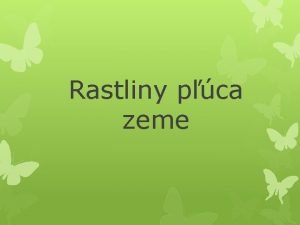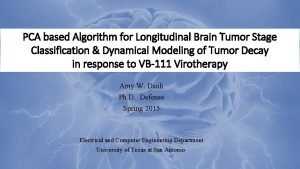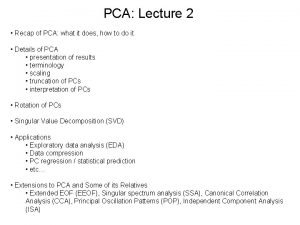PCA to find clusters Return to PCA of













































































































































- Slides: 141

PCA to find clusters Return to PCA of Mass Flux Data: Big Question: Are The 3 Clusters Really There?

PCA to find clusters Si. Zer analysis of Mass Flux, PC 1 All 3 Signif’t

Statistical Smoothing q Usefulness of Si. Zer : Detailed & Insightful Analysis of 1 Dataset q To Analyze Many Data Sets Need Automatic Choice q Reference: Jones, et al. (1996) q Also Recall Goldilocks Visual Approach Too Small, Too Big, Just Right

Q-Q plots Simple Toy Example, non-Gaussian!

Q-Q plots Simple Toy Example, non-Gaussian(? )

Q-Q plots Simple Toy Example, Gaussian

Q-Q plots Simple Toy Example, Gaussian?

Q-Q plots •

ROC Curve Slide Cutoff To Trace Out Curve

Q-Q plots Slide Cutoff To Trace Out Curve

Q-Q plots Illustrative graphic (toy data set): Empirical Qs near Theoretical Qs when Q-Q curve is near 450 line (general use of Q-Q plots)

Alternate Viewpoints P-P Plot = ROC Curve: Study Differences Between Data Sets Focus on Main Body of Distributions Q-Q Plot: For Checking Empirical Distribution vs. Theoretical Distribution Focus on Tails

Q-Q plots Gaussian? Departures from line?

Q-Q plots non-Gaussian! departures from line?

Q-Q plots non-Gaussian (? ) departures from line?

Q-Q plots Gaussian: Stays Within Envelope As Expected, Since This Is Null Hypothesis

Q-Q plots Gaussian? departures from line?

Q-Q plots What were these distributions? • Non-Gaussian! – 0. 5 N(-1. 5, 0. 752) + 0. 5 N(1. 5, 0. 752) • Non-Gaussian (? ) – 0. 4 N(0, 1) + 0. 3 N(0, 0. 52) + 0. 3 N(0, 0. 252) • Gaussian? – 0. 7 N(0, 1) + 0. 3 N(0, 0. 52)

Q-Q plots Non-Gaussian!. 5 N(-1. 5, 0. 752) + 0. 5 N(1. 5, 0. 752) True Density

Q-Q plots Non-Gaussian (? ) 0. 4 N(0, 1) + 0. 3 N(0, 0. 52) + 0. 3 N(0, 0. 252) Strong Kurtosis Now Visible

Q-Q plots Gaussian

Q-Q plots Gaussian? 0. 7 N(0, 1) + 0. 3 N(0, 0. 52) Less Kurtosis But Present

Q-Q Envelope Plots Marron’s Matlab Software: qq. LM. m In General Directory

Q-Q plots •

Q-Q plots •

Q-Q plots Variations on Q-Q Plots: • Can replace Gaussian with other dist’ns • Can compare 2 theoretical distn’s • Can compare 2 empirical distn’s • Could also Vary P-P plots = ROC curves

Clustering •

Clustering Important References: • Mac. Queen (1967) • Hartigan (1975) • Gersho and Gray (1992) • Kaufman and Rousseeuw (2005) See Also: Wikipedia

K-means Clustering • Each goes into exactly 1 class

K-means Clustering •

K-means Clustering •

K-means Clustering •

K-means Clustering •

2 -means Clustering Study CI, using simple 1 -d examples • Varying Standard Deviation

2 -means Clustering

2 -means Clustering

2 -means Clustering

2 -means Clustering

2 -means Clustering

2 -means Clustering

2 -means Clustering

2 -means Clustering

2 -means Clustering

2 -means Clustering

2 -means Clustering Study CI, using simple 1 -d examples • Varying Standard Deviation • Varying Mean

2 -means Clustering

2 -means Clustering

2 -means Clustering

2 -means Clustering

2 -means Clustering

2 -means Clustering

2 -means Clustering

2 -means Clustering

2 -means Clustering

2 -means Clustering

2 -means Clustering

2 -means Clustering

2 -means Clustering Study CI, using simple 1 -d examples • Varying Standard Deviation • Varying Mean • Varying Proportion

2 -means Clustering

2 -means Clustering

2 -means Clustering

2 -means Clustering

2 -means Clustering

2 -means Clustering

2 -means Clustering

2 -means Clustering

2 -means Clustering

2 -means Clustering

2 -means Clustering

2 -means Clustering

2 -means Clustering

2 -means Clustering

2 -means Clustering Study CI, using simple 1 -d examples • Over changing Classes (moving b’dry)

2 -means Clustering

2 -means Clustering

2 -means Clustering

2 -means Clustering C. Index for Clustering Greens & Blues

2 -means Clustering

2 -means Clustering

2 -means Clustering

2 -means Clustering

2 -means Clustering

2 -means Clustering Curve Shows CI for Many Reasonable Clusterings

2 -means Clustering •

2 -means Clustering

2 -means Clustering Study CI, using simple 1 -d examples • Over changing Classes (moving b’dry) • Multi-modal data interesting effects – Can have 4 (or more) local mins (even in 1 dimension, with K = 2)

2 -means Clustering

2 -means Clustering Study CI, using simple 1 -d examples • Over changing Classes (moving b’dry) • Multi-modal data interesting effects – Local mins can be hard to find – i. e. iterative procedures can “get stuck” (even in 1 dimension, with K = 2) Common, But Slippery, Approach: Many Random Restarts

2 -means Clustering Study CI, using simple 1 -d examples • Effect of a single outlier?

2 -means Clustering Minimum CI Splits in Half

2 -means Clustering Already Have Local Minima

2 -means Clustering

2 -means Clustering Global CI Minimum Now Here

2 -means Clustering

2 -means Clustering

2 -means Clustering

2 -means Clustering

2 -means Clustering

2 -means Clustering

2 -means Clustering Single Outlier Can Make CI Arbitrarily Small

2 -means Clustering Study CI, using simple 1 -d examples • Effect of a single outlier? – Can create local minimum – Can also yield a global minimum – This gives a one point class – Can make CI arbitrarily small (really a “good clustering”? ? ? )

K-Means Clustering 2 -d Toy Example Recall From Before (When Studying Kernel PCA) Long Thin Cluster Close Round Clusters Outliers or Clusters? ? ?

K-Means Clustering 2 -d Toy Example K-Means Can Be Slippery Local Minimum?

K-Means Clustering 2 -d Toy Example, No Outliers K-Means Can Be Slippery, Careful About Local Minima

SWISS Score Another Application of CI (Cluster Index) Cabanski et al (2010) Idea: Use CI in bioinformatics to “measure quality of data preprocessing” Philosophy: Clusters Are Scientific Goal So Want to Accentuate Them

SWISS Score Toy Examples (2 -d): Which are “More Clustered? ”

SWISS Score Toy Examples (2 -d): Which are “More Clustered? ”

SWISS Score •

SWISS Score •

SWISS Score •

SWISS Score •

SWISS Score •

SWISS Score Revisit Toy Examples (2 -d): Which are “More Clustered? ”

SWISS Score Toy Examples (2 -d): Which are “More Clustered? ”

SWISS Score Toy Examples (2 -d): Which are “More Clustered? ”

SWISS Score •

SWISS Score •

SWISS Score •

SWISS Score •

SWISS Score •

SWISS Score K-Class SWISS: Instead of using K-Class CI Use Average of Pairwise SWISS Scores

SWISS Score K-Class SWISS: Instead of using K-Class CI Use Average of Pairwise SWISS Scores (Preserves [0, 1] Range)

SWISS Score Avg. Pairwise SWISS – Toy Examples

SWISS Score Additional Feature: Ǝ Hypothesis Tests: ü H 1: SWISS 1 < 1 ü H 1: SWISS 1 < SWISS 2 Permutation Based See Cabanski et al (2010)

Clustering • A Very Large Area • K-Means is Only One Approach • Has its Drawbacks (Many Toy Examples of This) • Ǝ Many Other Approaches • Important (And Broad) Class Hierarchical Clustering

Hierarchical Clustering Idea: Consider Either: Bottom Up Aggregation: One by One Combine Data Top Down Splitting: All Data in One Cluster & Split Through Entire Data Set, to get Dendogram

Hierarchical Clustering Aggregate or Split, to get Dendogram Thanks to US EPA: water. epa. gov

Hierarchical Clustering Aggregate or Split, to get Dendogram Aggregate: Start With Individuals

Hierarchical Clustering Aggregate or Split, to get Dendogram Aggregate: Start With Individuals, Move Up

Hierarchical Clustering Aggregate or Split, to get Dendogram Aggregate: Start With Individuals, Move Up

Hierarchical Clustering Aggregate or Split, to get Dendogram Aggregate: Start With Individuals, Move Up

Hierarchical Clustering Aggregate or Split, to get Dendogram Aggregate: Start With Individuals, Move Up

Hierarchical Clustering Aggregate or Split, to get Dendogram Aggregate: Start With Individuals, Move Up, End Up With All in 1 Cluster

Hierarchical Clustering Aggregate or Split, to get Dendogram Split: Start With All in 1 Cluster

Hierarchical Clustering Aggregate or Split, to get Dendogram Split: Start With All in 1 Cluster, Move Down

Hierarchical Clustering Aggregate or Split, to get Dendogram Split: Start With All in 1 Cluster, Move Down, End With Individuals

Hierarchical Clustering Aggregate or Split, to get Dendogram While Result Is Same, There Are Computational Considerations

Hierarchical Clustering • A Lot of “Art” Involved

Hierarchical Clustering Dendogram Interpretation Branch Length Reflects Cluster Strength

Hierarchical Clustering 2 -d Toy Example Recall From Before (When Studying Kernel PCA) Long Thin Cluster Close Round Clusters Outliers or Clusters? ? ?

Participant Presentation Ram Basak: FDA on Health Outcomes Siqi Xiang: Analysis of Knee Osteoarthritis Data: Auto transformation and BET Nicolas Wolczynski: Urban Sound Classification Mingyi Wang: Symbolic Data principal component analysis
 How to find internal rate of return
How to find internal rate of return How to find expected return
How to find expected return Danielson clusters
Danielson clusters Virginia career clusters
Virginia career clusters Mn career clusters
Mn career clusters O*net work importance profiler
O*net work importance profiler Mapreduce simplified data processing on large clusters
Mapreduce simplified data processing on large clusters Lower brain
Lower brain Mcis career clusters
Mcis career clusters Enrichment clusters
Enrichment clusters Noun cluster
Noun cluster Regional clusters
Regional clusters Types of waves quad clusters
Types of waves quad clusters Galaxy clusters
Galaxy clusters Vowels and consonants difference
Vowels and consonants difference Introduction to career clusters - vocabulary
Introduction to career clusters - vocabulary Mcis career clusters
Mcis career clusters Cocci in grape-like clusters
Cocci in grape-like clusters Fcs lanchpad
Fcs lanchpad Vdoe career clusters
Vdoe career clusters A set of nested clusters organized as a hierarchical tree
A set of nested clusters organized as a hierarchical tree Two almond shaped neural clusters
Two almond shaped neural clusters High performance computing linux
High performance computing linux Short entrance lane
Short entrance lane Why are career clusters important
Why are career clusters important Jmu cluster 3
Jmu cluster 3 Types of waves quad clusters answer key
Types of waves quad clusters answer key Mapreduce simplified data processing on large clusters
Mapreduce simplified data processing on large clusters Four major population clusters
Four major population clusters Rocks clusters
Rocks clusters Two almond shaped neural clusters
Two almond shaped neural clusters Design principles of computer clusters
Design principles of computer clusters Maryland career clusters
Maryland career clusters Colorado career clusters
Colorado career clusters 15 grand strategies
15 grand strategies Hindi transliteration
Hindi transliteration Cue clusters in nursing
Cue clusters in nursing Mn career clusters
Mn career clusters Marking bad clusters data hiding technique
Marking bad clusters data hiding technique Georgia career clusters
Georgia career clusters Types of waves quad clusters answer key
Types of waves quad clusters answer key Career cluster definition
Career cluster definition Career cluster definition
Career cluster definition 2013 pearson education inc
2013 pearson education inc Galaxy clusters
Galaxy clusters Mapreduce simplified data processing on large clusters
Mapreduce simplified data processing on large clusters Cluster b personality disorder
Cluster b personality disorder Rit cs clusters
Rit cs clusters Schizotypal personality disorder
Schizotypal personality disorder 16 career clusters
16 career clusters Define career cluster
Define career cluster Regents
Regents Galaxy clusters
Galaxy clusters Empty space between traffic clusters
Empty space between traffic clusters Dx cluster software
Dx cluster software Virtualization of clusters in cloud computing
Virtualization of clusters in cloud computing Four major population clusters
Four major population clusters Pca example
Pca example Que es la pca
Que es la pca Is pca unsupervised learning
Is pca unsupervised learning Pca fa-113
Pca fa-113 Generalized pca
Generalized pca Statquest with john starmer
Statquest with john starmer Pruebas pca ejemplos
Pruebas pca ejemplos Loadings pca
Loadings pca Mark gerstein
Mark gerstein Unicef pca guidelines
Unicef pca guidelines Stata ereplace
Stata ereplace Tsne vs pca
Tsne vs pca Covariance pca
Covariance pca Broken stick pca
Broken stick pca Sparse pca
Sparse pca Nacora – cargo insurance
Nacora – cargo insurance Pca example
Pca example Que es la pca
Que es la pca Pca vs cfa
Pca vs cfa Knn pca
Knn pca Rmmss
Rmmss Pca vs ica
Pca vs ica Pca 512 instrukcja
Pca 512 instrukcja Covariance pca
Covariance pca Pca crucible
Pca crucible Pca and ica
Pca and ica Pca algorithm steps
Pca algorithm steps Pca vs ica
Pca vs ica Jmp machine learning
Jmp machine learning Rmr pca
Rmr pca Oracle private cloud infrastructure
Oracle private cloud infrastructure Kernel pca
Kernel pca Pruebas pca
Pruebas pca Pca
Pca Pca logistic regression
Pca logistic regression 21w12
21w12 Rmr pca
Rmr pca Pca observation chart
Pca observation chart Covariance pca
Covariance pca Isomap matlab
Isomap matlab Que es la pca
Que es la pca Ggfortify pca
Ggfortify pca Https://www.retourabsence.bscc.fr
Https://www.retourabsence.bscc.fr Pca téglik
Pca téglik Mnchoices assessment ramsey county
Mnchoices assessment ramsey county Pca map
Pca map Disposable pca pump
Disposable pca pump Que es la pca
Que es la pca Pca example
Pca example Pca bcp
Pca bcp Introduction to pca
Introduction to pca Rotated component matrix interpretation
Rotated component matrix interpretation 7 face
7 face Que es la pca
Que es la pca Jmp pca
Jmp pca Npv profiles
Npv profiles Developing pricing strategies and programs
Developing pricing strategies and programs Return on ordinary shareholders equity formula
Return on ordinary shareholders equity formula Shield punt protection
Shield punt protection Ingram micro rma
Ingram micro rma Risk and return
Risk and return How to calculate expected return
How to calculate expected return Knock-out option
Knock-out option Function without return python
Function without return python Return wall drawing
Return wall drawing Return crease no ball
Return crease no ball Return on sales formula
Return on sales formula When did romare bearden die
When did romare bearden die Pneumatic drawing
Pneumatic drawing Rate of return regulation
Rate of return regulation Return statement in c
Return statement in c Lesson 4 parameters and return make
Lesson 4 parameters and return make Current ratio adalah
Current ratio adalah Fungsi return pada python
Fungsi return pada python Nevada department of taxation modified business tax return
Nevada department of taxation modified business tax return Total anomalous venous return
Total anomalous venous return Investment appraisal techniques
Investment appraisal techniques Sequence diagram for restaurant management system
Sequence diagram for restaurant management system Return on common stockholders equity formula
Return on common stockholders equity formula Net operating assets
Net operating assets Point of no return
Point of no return Capital market line
Capital market line No deposit no return bottles
No deposit no return bottles Shipment linl
Shipment linl Advantage and disadvantage of npv
Advantage and disadvantage of npv
